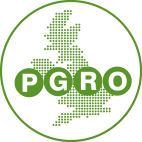Practice Abstract 48 - Market overview of dry peas and faba beans in the EU.
Short title (native language):
Market overview of dry peas and faba beans in the EU.
Short summary for practitioners (native language):
Dry pea production of more than 2 Mio. t is the second most produced grain legume in the EU after soybean. From 2014 to 2018, France, Lithuania, Germany, Spain, Romania and the UK represented around 80% of the EU production. Conventional cultivation dominates. The main consumers are France, Spain, Germany, UK and Italy. The main use in feeding, but the processed proportion for food is increasing. The largest processors of dry pea in the EU are Roquette (FR & NL), Emsland Group (DE) and Cosucra (BE & DK). The main importers are Spain (feedingstuffs), Belgium (foodstuffs: protein extraction), Germany (foodstuffs: starch extraction) and Italy (feedingstuffs). Russia, Ukraine, Kazakhstan and Canada supply dry pea to the EU. The main EU exporters are France, Lithuania and Romania. Export destinations outside the EU are India (food), Bangladesh (food), Norway (fish feed), China (food: starch extraction) and Switzerland (food). The Indian market has practically collapsed since 2018 due to import duties on legumes.
Faba bean with an average production of 1.8 Mio. t is the third largest produced grain legume in the EU. UK, France, Lithuania, Germany and Italy represent 70% of EU production. The conventional farming dominates. The main consumers are UK, Germany, France and Italy with the main use for feed and a very small amount for food. In contrast to dry pea, there is not import of faba bean from non-EU countries. The main importers in the EU are Spain (feedingstuffs) and Italy (feedingstuffs) and these imports are mainly from the UK, Lithuania, France and Latvia. Exports outside the EU are mainly destined to Egypt (food) with a decreasing trend, Norway (fish feed) and Sudan (food), both with an increasing trend.
Ref: kezeya.bruno@fh-swf.de



